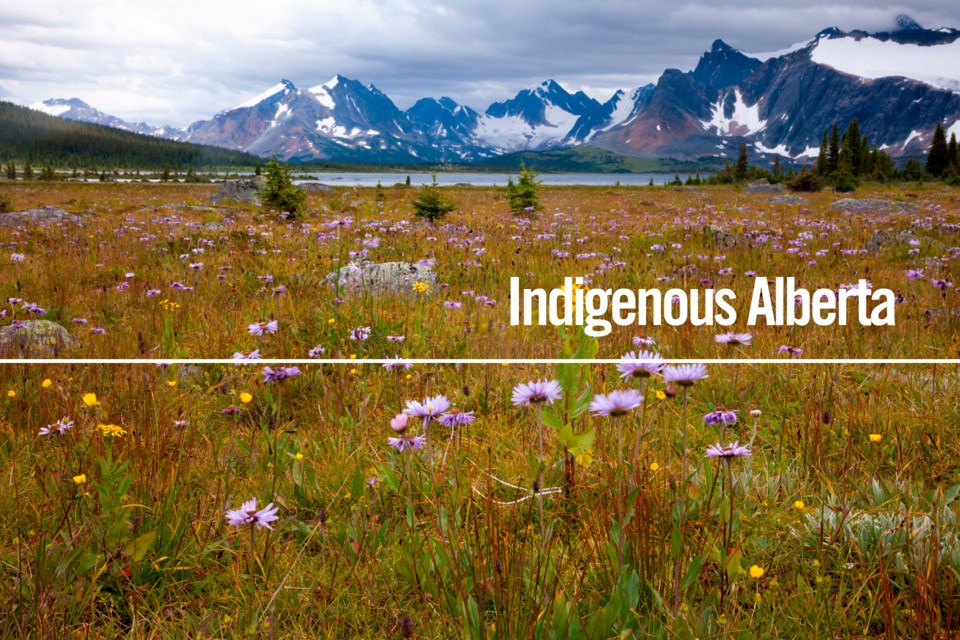After 20 years, there is finally an access management plan in place for Moose Lake, an area sacred to Fort McKay First Nation members in northern Alberta.
“I must say the (Alberta) government listened and it understood Fort McKay’s desire to protect Moose Lake. With that understanding of our need, the government was able to take the documents through Cabinet with all our recommendations, including the ban of major infrastructure within the 10-km zone,” said Fort McKay First Nation (FMFN) Chief Mel Grandjamb.
That 10-km buffer zone around Moose Lake was long a point of contention. FMFN argued that any infrastructure development in that zone would impact inherent and treaty rights to hunt, fish, trap and gather.
The Moose Lake Access Management Plan (AMP), released on Tuesday, prohibits major infrastructure development within that buffer zone. Development by petroleum natural gas, forestry, and sand and gravel will be restricted to a total 15 per cent footprint within that area. The disturbance limit will be allocated by each resource sector so as to enable sector-specific project planning.
The limitation of 15 per cent specified development within the buffer zone sets higher environmental standards than the local provincial standards, says Grandjamb, and was the figure the FMFN technical group had been pushing for.
“The whole basis of this is for our members to go to that lake, (so) we can practice our treaty rights. We have an inherent right to the land,” he said.
The plan also limits energy-related activities within one kilometre of the Moose Lake and Buffalo reserves to low impact exploration and monitoring only. As well there will be enhanced environmental monitoring for air, land, water and biodiversity for all industrial development within the planning area. No new metallic and industrial minerals extraction activities will be permitted within the 10-km buffer zone.
The province is also investing about $8 million in the restoration of legacy seismic lines throughout the buffer zone, which will allow for further resource activity in the region.
“It’s just one component of our commitment within that plan, but a pretty big one,” said Environment and Parks Minister Jason Nixon.
“At the end of the day what we see here is a plan that balances First Nation community needs and rights, the treaty rights, within the area but still allows resource development to take place,” he said.
“It’s a great move forward to find that balance with the First Nation and industry and the government working together,” said Indigenous Relations Minster Rick Wilson.
Grandjamb says FMFN has always been supportive of sustainable and responsible development.
The Fort McKay Group of Companies, fully owned by the band, began in 1986 and provides oilfield development and services.
“There’s nothing saying that (if) there’s a project that’s viable, that meets our environmental standards, including the protection of our treaty rights, we may entertain an equity partnership. The sky’s the limit. The document is going to lay the foundation for us moving forward,” said Grandjamb.
Nixon agrees.
“It provides certainty to industry and to the community what's going to take place on the landscape and presents a way we can protect the environment and treaty rights while at the same time making sure we can develop resources for generations to come,” said Nixon.
In moving forward, Grandjamb says he will uphold his election pledge: “It's my job as chief of the nation to constantly remind the province and the feds of what's important to Fort McKay, and that's responsible resource development (with the) bottom line being able to ensure we can practice our treaty rights.”
Grandjamb was elected in 2019.
Nixon says there is a team consisting of government, Indigenous nations and industry that will continue to work together to ensure all decisions align with the Moose Lake AMP.
Dedicated work on the plan began in January 2020 when FMFN hosted the Moose Lake Together Summit in Edmonton. However, the coronavirus hit and pandemic-control measures, which started in March last year, slowed the process.
The Moose Lake AMP will initially be implemented as a policy before it is incorporated in the Lower Athabasca Regional Plan (LARP).
Review of LARP is scheduled to get underway in 2022. During this process, the Moose Lake AMP will be brought into LARP permanently.
Grandjamb says if measures were not in place to stop the spread of COVID-19, the community would be celebrating with a round dance.
In a news release issued today, Ron Quintal, president of the Fort McKay Métis Nation, called the Moose Lake AMP “a major step forward in the relationship between our communities and the Government of Alberta.”
Link to the plan: https://open.alberta.ca/publications/moose-lake-access-management-plan
Shari Narine, Local Journalism Initiative Reporter
Read more from cfweradio.com




